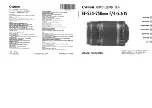
PG7000™ OPERATION AND MAINTENANCE MANUAL
© 1998-2008 DH Instruments, a Fluke Company
Page 42
3.6
MASS LOADING PROTOCOL
PURPOSE
To provide the operator with mass loading instructions and allow mass entry in convenient nominal values
which PG7000 can accurately convert to measured mass values to determine the actual mass load.
PRINCIPLE
All PG7000 manual mass set masses of 0.1 kg and above, including those in the mass set, the mass
loading bell and the piston assembly, are adjusted so that their true mass is within ± 20 ppm of their
nominal value
. The
nominal value
is marked on each mass. Each mass’s
actual individual value
is
measured more accurately than ± 20 ppm and reported in the mass set, mass loading bell or piston-
cylinder module calibration report. These measured
actual values
are used by PG7000 in all of its
defined pressure calculations. The
nominal mass values
, and the sequential numbers of the
nominal
masses
when there are several of the same value, are used by PG7000 to describe the mass to load or
the mass that is loaded. Following a few simple mass loading rules allows PG7000 to accurately
transform
actual mass values
into
nominal mass values
and vice-versa so that mass loading
instructions to the operator and the operator mass entries can be made in simple
nominal mass
instructions
while representing
actual individual mass values.
Since the
nominal mass values
written on the masses and the
actual values
of the individual masses
are different, in
pressure to mass
mode (see Section 3.9.12) the
actual mass value
loaded on the piston
will be different from the mass loading instruction. In the same manner,
in mass to pressure
mode
the
nominal value
of the mass load that the operator enters is different from the
actual mass
loaded
on the piston. The mass value shown in the MAIN run screen (see Section 3.7) is always the
actual mass value
. The mass loading instruction given in
pressure to mass
mode and the mass value
entered by the operator in
mass to pressure mode
is always the
nominal mass value
. If PG7000 mass
loading protocol is followed, the conversion from
nominal mass
to
actual mass
occurs correctly allowing
very simple nominal mass loading and accounting for the operator while using very accurate measured
mass values for metrological calculations.
OPERATION
To avoid wear to masses and to the piston-cylinder module end of stroke stops, the piston should not
be rotating when masses are loaded or unloaded. Before loading masses, stop piston rotation by hand or
using the motorized rotation system (see Section 3.9.13).
PG7000 instructions to the operator of mass to load, and operator entries of the mass that is loaded, are
always expressed in terms of nominal mass within 0.1 kg and in terms of grams for values under 0.1 kg.
This protocol is also followed when using the AMH automated mass handler.
In
pressure to mass
mode, the instruction of the mass to load to
achieve the requested pressure is formatted:
Load nominal mass:
kkk.k
kg and gg.gg g
In
mass to pressure
mode, the entry of the mass currently loaded
on the piston is formatted:
Nominal mass load:
kkk.k
kg and gg.gg g
Содержание PG7000
Страница 10: ...PG7000 OPERATION AND MAINTENANCE MANUAL 1998 2008 DH Instruments a Fluke Company Page VIII N NO OT TE ES S ...
Страница 44: ...PG7000 OPERATION AND MAINTENANCE MANUAL 1998 2008 DH Instruments a Fluke Company Page 34 N NO OT TE ES S ...
Страница 182: ...PG7000 OPERATION AND MAINTENANCE MANUAL 1998 2008 DH Instruments a Fluke Company Page 172 N NO OT TE ES S ...
Страница 210: ...PG7000 OPERATION AND MAINTENANCE MANUAL 1998 2008 DH Instruments a Fluke Company Page 200 N NO OT TE ES S ...
Страница 214: ...PG7000 OPERATION AND MAINTENANCE MANUAL 1998 2008 DH Instruments a Fluke Company Page 204 N NO OT TE ES S ...
Страница 224: ...PG7000 OPERATION AND MAINTENANCE MANUAL 1998 2008 DH Instruments a Fluke Company Page 214 N NO OT TE ES S ...
















































